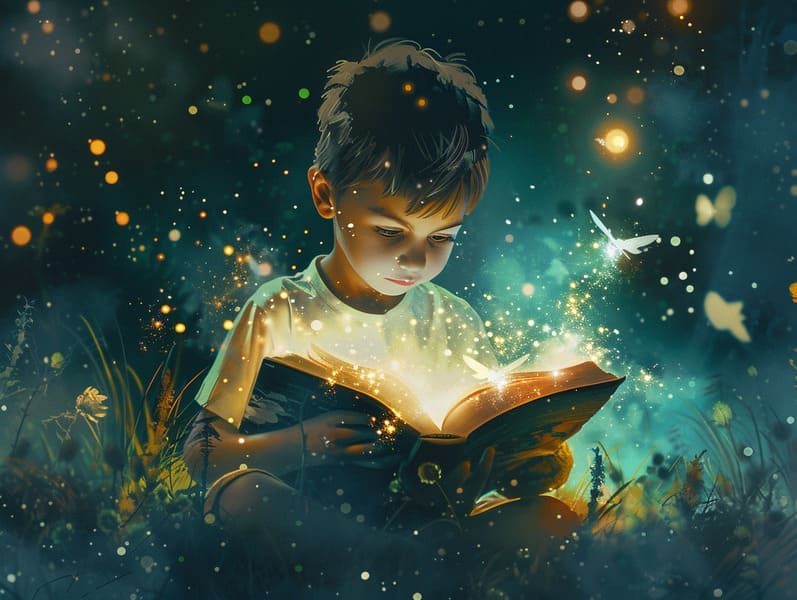
Popular fairy tales have historical significance. These stories have been told from one generation to the next millennia before they were ever put on paper. They originated from a variety of traditions, including Asian traditions. They were initially passed along among mature audiences, often carrying themes and messages pertaining to the societal norms and beliefs of the time.
Jacob and Wilhelm Grimm, the two Grimm brothers, were among the first to compile many of these beloved stories. Their anthology, "Grimm's Fables," included classics like "The True Bride," "The Bread Crumb Trail," and "Snow-White and Rose-Red," which have since become classics in the world of beloved fairy tales. Similarly, Hans Christian Andersen's delightful narratives, such as "The Little Mermaid," and "The Duckling's Story," have floated into hearts worldwide, cementing their place in the pantheon of classic fairy tales.
Though they are centuries old, traditional fairy tales remain as pertinent as ever, especially as nighttime stories for kids. These delightful tales are now available in multiple formats, including richly illustrated books, fantastical animations, and digital fairy tales.
Their unwavering allure can be linked to several magical reasons:
Significant Morals: Old fairy tales often illustrate important moral lessons. Stories like "The Tale of the Boy Who Cried Wolf" teach the benefit of truth, while "The Tale of the Tortoise and the Hare" highlight the merits of steadfastness and modesty. These tales offer little ones clear distinctions between right and wrong, shaping their moral compass in a gentle yet deep way.
Empathy and Awareness: Traditional fairy tales frequently showcase protagonists facing struggles and tests, inspiring children to sympathize with their struggles and support their triumphs. For instance, "The Story of Beauty and the Beast" conveys the merit of looking beyond appearances to appreciate the inner spirit of a being, fostering warmth and comprehension.
Cultural Insights: Many classic fairy tales are rich in the cultural contexts from which they bloomed. Engaging with these tales can provide fascinating glimpses into different backgrounds, cultivating a sense of cultural insight and recognition.
Fantasy and Innovation: The fantastical elements in fairy tales—magical beings—foster children’s innovations. These tales lead readers to mythical realms, inspiring inventive ideas and a sense of astonishment that endures a lifetime.
Traditional fairy tales are not only whimsical but also informative. They work as alluring tools in promoting various mind and heart abilities in little ones. When old fairy tales are voiced, they strengthen language development by presenting new vocabulary and complicated sentence structures. This practice also develops listening abilities and focus, as the young hang on every word, excited to see what happens next.
Furthermore, analyzing the themes and characters of timeless fairy tales can develop thinking skills and evaluative skills. Young readers are guided to detect patterns, guess what will happen, and grasp cause and effect. These examinations also encourage young readers verbalize their thoughts and feelings, nurturing their emotional intelligence.
In today’s technological age, the abundance of free fairy tales online has made these stories more acquirable than ever. Online resources and mobile apps share large libraries of famous fairy tales that can be browsed or heard anytime, anywhere. Fairy tales read aloud are particularly in demand, featuring an entertaining method for young readers to take part in these charming tales. Voice books and voiced videos guide read more characters and settings to life, often joined by fantastical melodies and melodies that raise the narrative adventure.
The timeless charm of timeless fairy tales lies in their ability to alter to present eras while sustaining their essential themes. Contemporary revisions of these narratives often incorporate more multicultural protagonists and modern settings, making them accessible to today’s audience. However, the central morals of gallantry, humanity, and justness remain unchanged, continuing to appeal to young listeners of all ages.
Classic fairy tales also offer a sense of calm and recognition. They bestow a organized narrative with a clear beginning, middle, and end, often wrapping up with the culmination of conflicts and the triumph of good over bad. This regularity can be consoling for little ones, extending a sense of steadiness in an variable world.
Classic fairy tales continue to bewitch and guide new generations, maintaining their magic and pertinence in modern society. As children's night stories, they bring a perfect blend of magic and knowledge, facilitating moral values, empathy, and creativity. The proliferation of internet fairy tales and the prevalence of fairy tales voiced secure that these ancient tales remain available to new generations.
By guarding and imparting these tales, we continue to laud the rich tapestry of inventiveness and cultural heritage. Whether you are perusing a beautifully illustrated book, accessing a cyber collection, or listening via an read-aloud story, the mystique of old fairy tales is always within reach. These tales show us of the timeless presence of narratives and its ability to unify us across generations and cultures.
Even if you are enjoying a vibrantly illustrated book, viewing a cyber collection, or hearing an narrated book, the attraction of famous fairy tales is always within reach.
These stories demonstrate of the ageless essence of storytelling and its ability to bond us across time and space, weaving a spell that delights and instructs alike.
Comments on “The Emergence of Classic Fairy Tales and the Unceasing Elegance.”